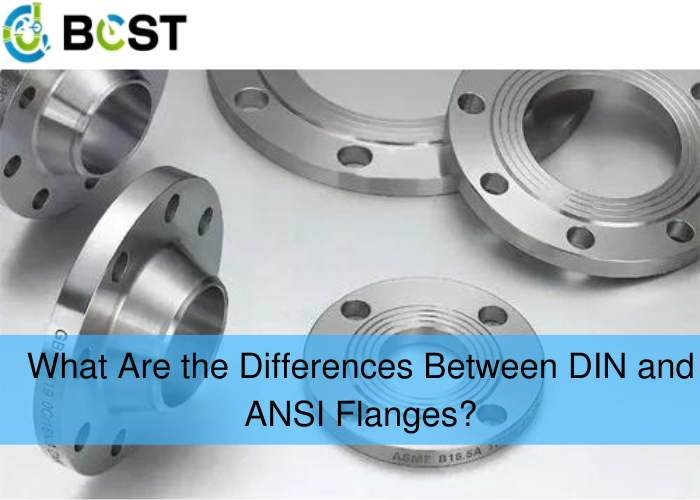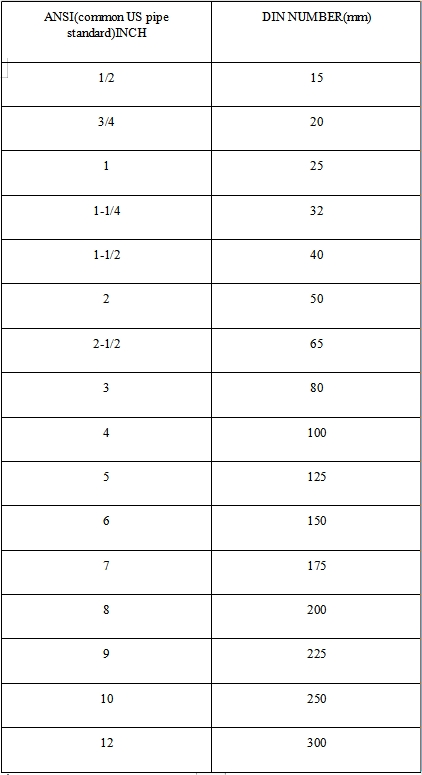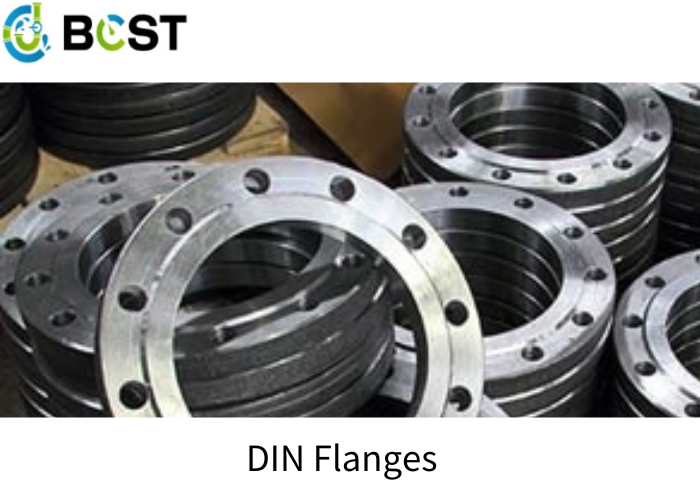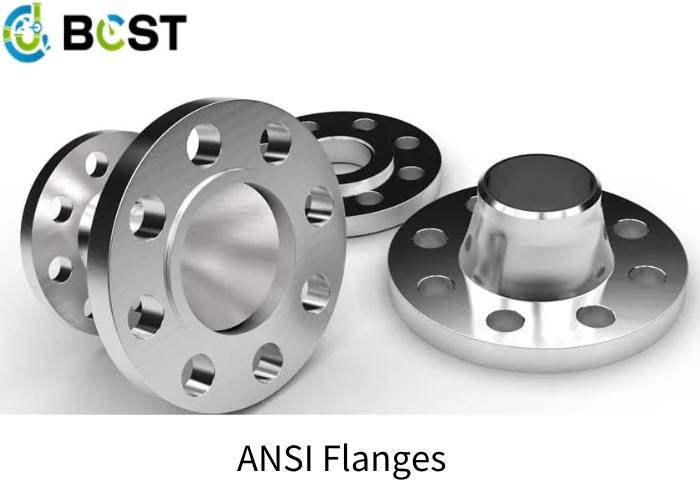
In the expansive field of industrial engineering, the significance of flanges cannot be overstated. They serve as linchpins in connecting pipelines, establish vital entry and exit points for equipment, and facilitate seamless connections between various devices. The spectrum of flanges is broad, encompassing carbon steel, cast steel, alloy steel, stainless steel, copper, and aluminum alloy flanges. Diverse production methods, including forging, casting, and welding, contribute to the myriad options available. Amidst this diversity, DIN (Deutsches Institut für Normung) and ANSI (American National Standards Institute) flanges stand out as prominent standards. In this comprehensive exploration, we delve into the intricacies of these two standards, examining their nuanced differences and implications.
Ⅰ. Unpacking the Nomenclature
Firstly, let’s untangle the nomenclature. In North America, flanges often go by the moniker ANSI flanges, where ANSI represents the American National Standards Institute. This non-governmental, non-profit organization plays a crucial role in harmonizing and accrediting industry standards in the United States, ensuring global compatibility for American products. In contrast, across the Atlantic in Europe, flanges are commonly referred to as DIN flanges, with DIN signifying Deutsches Institut für Normung. As a governmental organization, DIN reflects Germany’s leadership in setting standards within European and international frameworks.
Ⅱ. Dimensional Standards Dissected
The divergence in dimensional standards between DIN and ANSI flanges represents a critical distinction. In Europe, particularly in Germany, DIN standards are the norm, while in the United States, ANSI standards take precedence. This dichotomy results in the utilization of distinct units of measurement and standards. ANSI flanges are dimensioned in inches and pressure is measured in psi (pounds per square inch), whereas DIN flanges adhere to metric measurements, with dimensions expressed in millimeters and pressure in bars (pascals).
To illustrate this dichotomy more vividly, let’s scrutinize the correspondence between common sizes in ANSI and DIN standards. In ANSI standards, 1/2 inch equates to 15mm, 3/4 inch to 20mm, and so forth. In DIN standards, these correlations are expressed in millimeters, where 15mm corresponds to 1/2 inch, and 20mm corresponds to 3/4 inch.

Ⅲ. Nominal Pressure and Structural Disparities
Nominal pressure, a critical consideration, unveils another layer of disparity. In the European DIN flange system, nominal pressure spans a wide range from 0.1 to 40.0 Mpa. Conversely, in the American ANSI flange system, nominal pressure ranges from 150 psi to 2500 psi. This substantial difference underscores the varied pressure-bearing capabilities of flanges employed in different regions.
Beyond nominal pressure, the structural makeup of flanges also sets DIN and ANSI apart. DIN flanges boast diverse structural types, including flat welding plate, flat welding loose sleeve, rolled edge loose sleeve, butt welding rolled edge loose sleeve, butt welding loose sleeve, butt welding, neck screw connection, integral, and flange cover. In contrast, ANSI flanges feature structural variations such as fillet weld, socket weld, threaded connection, loose sleeve, butt welding, and flange cover.
Ⅳ. Application Dynamics
Due to their unique properties, DIN and ANSI flanges find distinct applications. ANSI flanges, cherished for their robustness and durability, command attention in both domestic and international industrial settings. However, in European countries, especially in Germany, DIN flanges remain the preferred standard, supported by a comprehensive array of over 30,000 DIN standards covering a myriad of products and technologies.

Ⅴ. Flange Face Configurations:
DIN and ANSI flanges diverge significantly in their approach to flange face configurations. DIN flanges conventionally feature a raised face, imparting a pronounced presence and ensuring an effective seal. The raised face serves as a signature element, exemplifying the meticulous engineering ethos characteristic of DIN specifications. ANSI flanges, by contrast, present a choice between a raised face, offering a polished appearance, and a flat face for applications where simplicity is paramount. This variance in flange face designs encapsulates the disparate design philosophies inherent in DIN and ANSI standards.
Ⅵ. Material Compatibility:
Material compatibility stands as a pivotal factor influencing the selection of flanges for specific engineering applications. DIN flanges, synonymous with stainless steel applications, embody resilience and precision. The focus on stainless steel aligns with the German commitment to durability and high-pressure handling. In contrast, ANSI flanges exhibit versatility in material options, accommodating a broader range of materials. This adaptability renders ANSI flanges suitable for a myriad of applications, mirroring the pragmatic approach embedded in American engineering traditions.

Ⅶ. Flange Face Texture:
The texture of flange faces represents a nuanced aspect of differentiation between DIN and ANSI specifications. DIN flanges, characterized by a smooth face, embody an emphasis on precision and a clean interface. This design choice facilitates a tight seal and promotes efficiency in fluid containment. Conversely, ANSI flanges incorporate a serrated face option, introducing an element of surface grip for applications where enhanced traction is deemed advantageous. This variance underscores the divergent considerations given to surface interaction within the engineering contexts defined by DIN and ANSI standards.
Ⅷ. Pressure-Temperature Ratings:
Critical to the operational viability of flanges are their pressure-temperature ratings. DIN flanges, distinguished by their robust construction, excel in handling elevated pressure and temperature conditions. This superior performance aligns with the stringent engineering expectations typified by DIN specifications. ANSI flanges, while adept, may exhibit slightly lower pressure-temperature ratings in comparison, reflecting the nuanced trade-offs inherent in their design.
Addressing Interchangeability Challenges
It is imperative to underscore that DIN and ANSI flanges are not seamlessly interchangeable. Their disparities in dimensions, pressure ratings, and other factors render direct replacement unfeasible. While custom adapters can be crafted to bridge this gap, in many scenarios, opting for components aligned with the respective standards proves to be a swifter and more reliable solution.
In conclusion, the distinctions between DIN and ANSI flanges extend beyond terminology and dimensions, permeating through pressure ratings, structural variations, and regional applicability. A nuanced understanding of these differences is imperative for engineers and professionals navigating diverse industrial landscapes. The choice between DIN and ANSI standards can significantly influence the performance and reliability of piping systems, underscoring the importance of making informed decisions based on the specific requirements of each context






